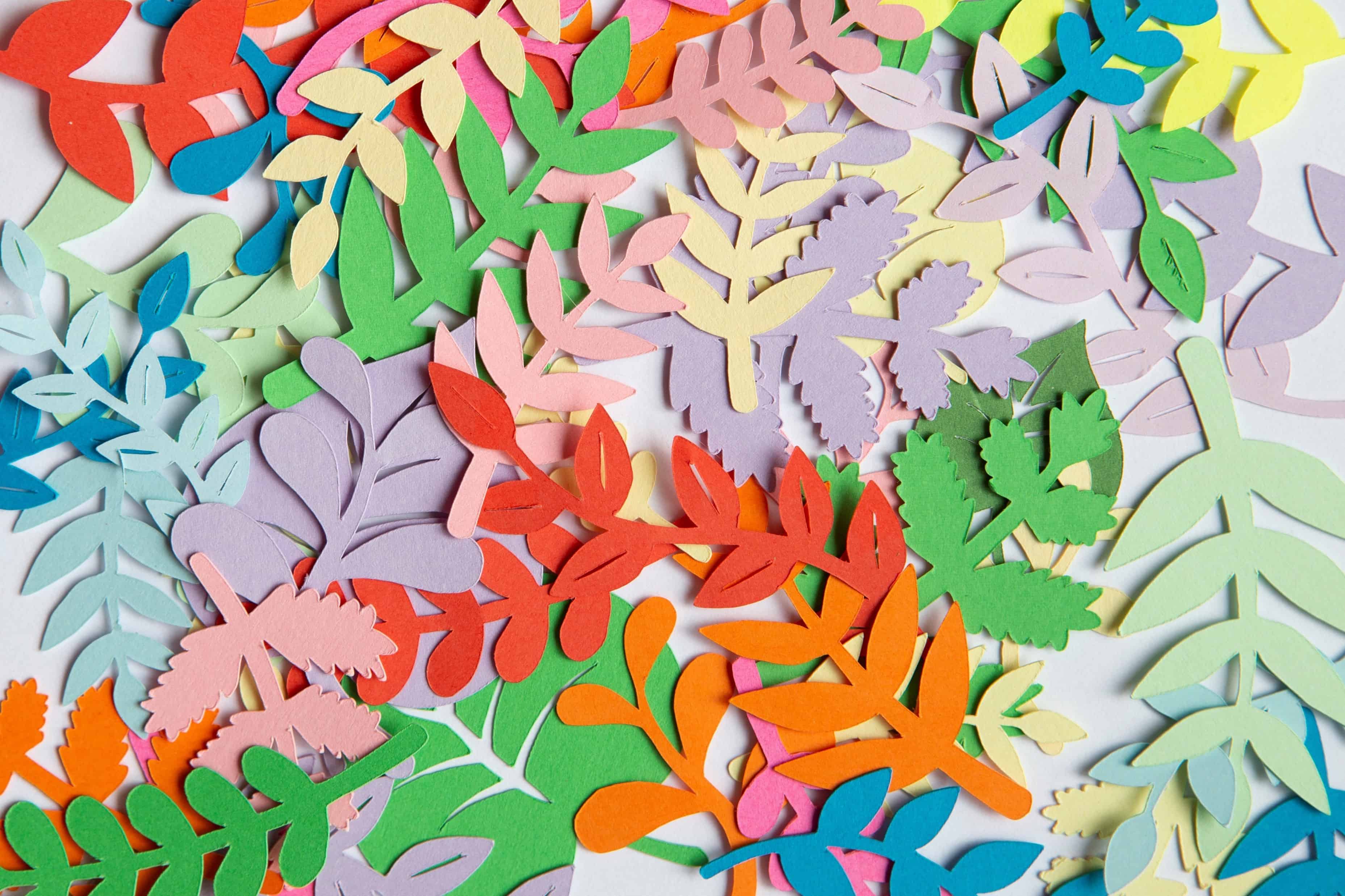Expressive Arts and Design
An integral part of creating greener spaces is design. It is important that learners are encouraged from an early age to consider nature and environmental impact whilst being creative. This continuous provision station takes learners on a reflective journey, looking closely at their outdoor space, engaging with potential green interventions, creating their own green zones and eventually voting on which change they wish to make to their setting.
Adult-led Activity Suggestions
- Create natural art using the Japanese art of Hapa Zome. Learners can collect their own leaves, berries or natural objects and use a mallet or rolling pin to create symmetrical patterns on natural cloth.
- The Potions and Pies activity can support the exploration of a variety of natural materials and create a mud pie. Learners can explore different techniques to mix, bind and present their pies, thinking about colour, design, texture, form and function.
- Make a rainstorm - learners can work as a group to create the sounds of a rainstorm using natural objects.
- Learners can explore animal habitats through nest building. Children can take a walk around the school field or local green space to collect soft and hard objects before embarking on a nest building adventure which provokes thought around which objects birds collect to create a safe and warm environment inside, and which materials provide structure and protection.
- Nature Park activity: Colour collection - this activity will encourage learners to explore their outdoor space using colours, thinking about why they might find different colours and shades around their site.
Green Skill Development
- Recording Data
- Data Interpretation
- Decision Making and Creative Thinking
- Environmental Stewardship
Continuous Provision
Our Green Future Board
During this series of activities, learners can make decisions towards the changes they want to see in their outdoor space. They can have the opportunity to plan and reflect on their dream green setting and vote on which green intervention they would like initiate.
To begin with, learners can be invited to cut a heart shaped hole in a piece of paper. Using this as view finder, they can hold the heart to frame parts of their outdoor space they like. Learners can be challenged to do this several times with a particular sense mind each time (sight, smell, hearing, touch). A circle time reflection activity can provide the space for learners to share elements of the outdoor space they liked the most and why. We can support learners to understand their role in caring for and developing their outdoor space, valuing both the needs of wildlife and each other. To create a healthy space for wildlife, pictures, can be used to introduce nature intervention ideas:
- Planting a wildflower area
- Tree planting
- Making raised beds to grow food.
- Creating a discovery dig pit to explore life underground.
- Digging a pond
- Creating a log circle.
- Building a bug hotel
- Green Wall
Show the group pictures of each potential intervention and discuss how it may impact themselves and wildlife. Introduce a simple hand drawn or google map image of your setting to the learners and take a walk around the try and orientate where you are on the map. Point to a spot on the map and ask learners to find it in real life.
Now place smaller pictures of the interventions (2cm by 2cm) on the arts and crafts table with a simple hand drawn map of your setting for each child. Give learners time to stick the interventions they like on to the map of their setting so that they have the opportunity to design a potential new space.
Finally, place a picture of each potential intervention along the bottom of a pictogram. Explain that each child has one vote and can vote on the intervention that they really want to see in their setting. Learners can vote by placing a multilink cube on their choice of intervention. Once all learners and staff have voted a simple bar chart has formed and you can discuss the findings as a class. The learners have now voted on a positive change they wish to make in the world. If your setting is entirely indoors or on concrete, you can alter this by planting in tires or pots and have learners decide on which seeds to plant.

Early learning goal outcomes
- Safely use and explore a variety of materials, tools and techniques, experimenting with colour, design, texture, form and function.
- Share their creations, explaining the process they have used